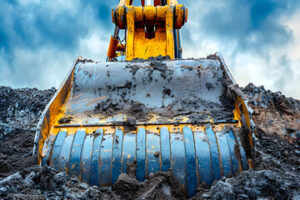Cabinet Refinishing Modesto Anchor is an excellent option for updating kitchen cabinets that show some surface-level wear. It’s a cost-effective choice for those that love the look of wood, but need to address issues with color or finish.

Unlike refacing, refinishing does not require the removal of cabinet doors or drawer fronts. But it does require the preparation of surfaces and the careful application of multiple coats.
Cabinet refinishing is the least expensive option for upgrading your cabinets, but it still requires a significant time commitment. The process involves sanding the cabinet boxes to remove old paint or a glossy finish, then priming them to ensure the new stain or paint adheres correctly. This step can take one to three days, depending on the size of your kitchen and the number of cabinets.
After the sanding and priming stages are complete, it’s time to apply the stain or paint coats. This stage requires patience as you wait for the surface to dry properly, ensuring your cabinets look polished and professional. The amount of time this stage takes depends on the type of finish you choose: staining is less labor intensive than painting and requires fewer coats.
This time investment can be challenging for homeowners with busy schedules, but hiring a professional can save you the headache and stress of doing it yourself. A skilled contractor can usually refinish cabinets in one to three days, thanks to their expertise, specialized tools, and streamlined processes.
The exact cost of cabinet refinishing will depend on the size of your kitchen, number of cabinets, and type of finish. The price can also vary by region, as labour rates are higher in urban areas than in rural ones.
Cabinet replacement is the most expensive option for updating your cabinets, but it can provide a more drastic transformation than refinishing or refacing. Replacing cabinets will also require removing and replacing the countertops, which adds to the overall cost.
For a more gradual upgrade, you can also consider replacing the cabinet hardware. New hinges and handles can dramatically improve the look of your cabinets for a relatively low cost. However, keep in mind that changing the hardware can make your cabinet doors appear misaligned and may require additional work on the sanding and priming stages. Lastly, replacing the cabinet boxes will likely require you to purchase and install new drawer fronts and doors, adding to the total cost.
Time
Cabinet refinishing is a time-consuming process, but it can save you more than a third of the cost of replacing cabinets completely. A professional will have the skills and expertise needed to complete the job quickly, minimizing disruptions to your daily routine. However, the length of time required to refinish your kitchen cabinets depends on a number of factors.
To begin with, you need to prepare the area by covering countertops and appliances and cleaning all surfaces thoroughly. This may take a few hours to a day depending on the size of your kitchen. You should also label all the doors and hinges to ensure that they are reinstalled in the correct place. This will help avoid confusion and prevent the possibility of damaging your new paint.
The stripping and sanding process can take several days, and each coat of stain or paint takes time to dry. In addition, the amount of damage on your cabinets can impact how long it will take to refinish them. For example, a gouge that requires wood filler may add to the overall project time.
Another factor is whether you are going from light to dark, or vice versa. This will impact the level of preparation necessary, and can cause some areas to be darker or lighter than others. Ultimately, the best option is to talk with your contractor about your options and choose a color that suits you and your home.
If you are on a tight deadline, your best option is to hire professionals. They will have access to tools and materials that are not available in retail stores, and they will know how to apply them correctly for a durable finish that will last. In addition, they will be able to identify and fix any problems before they become serious issues that require extensive repair or replacement.
If you’re looking for a quick update to your kitchen, cabinet refinishing is the best choice. It’s cheaper than a full renovation, and it can be completed in just a few days. It’s ideal for repairing surface-level damage, and it offers endless customization possibilities.
Preparation
Cabinet refinishing is a cost-effective alternative to full replacement and can revitalize your kitchen’s appearance. However, this project isn’t without its challenges. One of the most critical aspects of this process is surface preparation, which dramatically depicts the results and longevity of your new paint finish. Properly preparing your cabinets will ensure that the paint adheres properly and looks smooth. You should also be careful to mask off surfaces you don’t want painted to avoid accidental splatter. Masking is easy with brown builder’s paper or plastic tarps, which can be placed over countertops, backsplashes, and floors.
First, clean the cabinets thoroughly to remove any grease and grime buildup. This can be done with a mild detergent solution or a degreasing product. Then, sand the cabinet surfaces to improve paint adhesion. You can use a medium-grit sandpaper to achieve this, and you should sand along the grain. Next, wipe down the cabinet surfaces with a damp cloth to remove any remaining dust and residue.
Another important aspect of cabinet refinishing is filling in dents and scratches. This step is especially critical for older cabinets, which tend to accumulate these blemishes over time. Wood filler can be applied to these areas to restore the original contour of the cabinet. This will give your cabinet a seamless, flawless finish that complements the rest of the kitchen.
Lastly, you must choose the right stain or paint color for your cabinets. The color of your cabinet can set the tone for the room and make it feel warmer or cooler. It can also highlight specific features or add a pop of color to the space. It’s best to consult with a professional for advice on choosing the right color for your cabinetry.
Whether you’re a DIYer or hire a professional, cabinet refinishing can be an excellent way to update your kitchen’s look. With careful planning and proper execution, this transformative process can help you craft a space that reflects your style and elevates your home’s functionality. The final result will be a kitchen that is both aesthetically pleasing and functional, capturing the heart of your home’s personality.
Results
A refinishing project can transform your cabinets, bringing new life to your kitchen without the hefty price tag of a full remodel. In addition, it’s easier and quicker to complete than a reface. The results of refinishing are durable, lasting for years to come. It’s important to prepare your cabinets correctly, though, to ensure the best possible results. This includes stripping the existing finish, repairing any damage, and sanding the surfaces before applying new stain or paint. A professional refinishing company will have the knowledge and experience to do this quickly and effectively, giving you a flawless result that looks like new.
Cabinet refinishing also offers a wide variety of color options to fit your style. You can choose a timeless neutral that complements your decor or a bold statement color to make a big impact. Additionally, you can add accents like antiquing or glazing to create a custom look. Other finishing touches, like crown molding and storage enhancements, can give your cabinets a more upscale look.
While refinishing is a great option for most cabinets, it is not suitable for every type of finish. Generally, it works best on solid-wood cabinetry with a natural wood grain and a water-resistant stain or lacquer. It does not work well on thermofoil or vinyl doors, which are prone to peeling and cracking. Refinishing is also not recommended on cabinet doors with unfilled holes or dents, as these can lead to warping and chipping of the finish.
After your cabinets are refinished, it’s important to care for them properly to preserve the finish and keep them looking new. Washing them regularly with a mild soap and warm water solution will help keep them clean and free from dust and grime. Avoid abrasive cleaners, as these can dull the shine of your refinished cabinets.
Refinishing your cabinets can be a difficult project for the average homeowner to do on their own. A professional refinishing team brings years of experience and expertise to the job, ensuring high-quality results. They can also offer advice on the best finishes to match your space and provide recommendations that will make your cabinets less likely to scratch or yellow over time.



